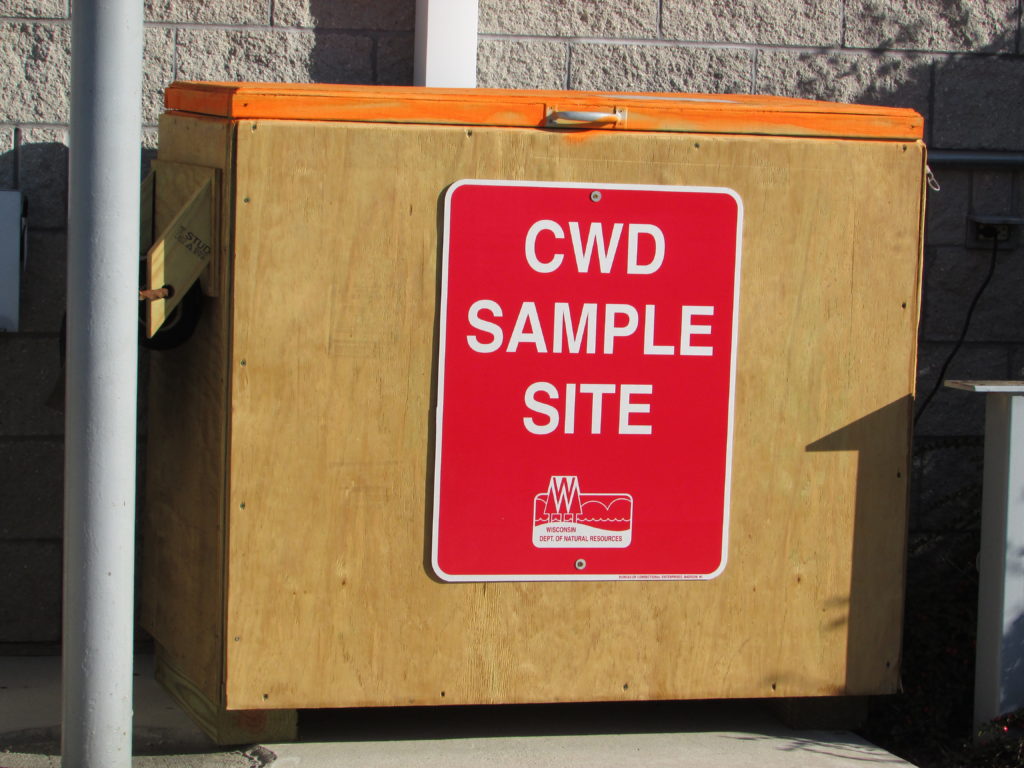DNR Publishes Primary Results Of Southwest Wisconsin CWD, Deer And Predator Study
The purpose of this study was to determine how CWD impacts deer populations.
The Wisconsin Department of Natural Resources (DNR) presented the primary results of the Southwest Wisconsin Chronic Wasting Disease (CWD), Deer and Predator Study to the Natural Resources Board (NRB) earlier this week. A recording of the NRB meeting, including this presentation, is available on the DNR’s YouTube channel.
The purpose of this study was to determine how CWD impacts deer populations. This involved estimating deer survival rates and how they were influenced by CWD.
Fieldwork for this project took place in northern Iowa, Dane and Grant counties. This area was selected for study as it is the region where CWD was first detected in Wisconsin in 2002 and has maintained a high CWD prevalence in the years since.
As part of this study, over 1,200 animals (adult deer, fawns, coyotes and bobcats) were captured, 766 GPS collars were deployed on adult deer and 323 radio tracking collars were placed on deer fawns.
Results
Scientists analyzed data from the sample of collared adult white-tailed deer in order to estimate the differences in annual survival (the probability of surviving from one year to the next) between CWD-infected and uninfected deer. Annual survival estimates are listed in the table below.
Annual Survival Probability
| |
Uninfected |
CWD-Infected |
| Females |
83% |
41% |
| Males |
69% |
17% |
These figures indicate that CWD is substantially reducing the annual survival probability of both male and female white-tailed deer. Reduced female survival lowers the growth rate of the population, and when sufficiently suppressed, may result in population decline.
Specifically, results from this study indicate that when the CWD prevalence rates of females surpasses about 29%, deer populations are expected to begin declining.
Read the full study results and implications.
Creating Community On The Slopes
For those whose communities seem underrepresented in skiing, getting started and feeling comfortable with this winter pastime can be a challenge. A Milwaukee-based snow sports club is “Creating community on the slopes,” and the latest issue of Wisconsin Natural Resources magazine has the story. The group, Ebony Ice, focuses on increasing access for people of color and supporting them throughout their snow sports journey so they feel welcome and safe on the slopes.
Also on the topic of seasonal activities, the winter magazine has plenty of other coverage, too, with features on everything from winter fat-tire biking to snowshoeing to sledding and snowmobile safety. There’s even “A study in snowflakes,” with details on how unique snowflakes are formed, plus a kids’ activity to make your own paper snowflakes to decorate your space this winter.
These stories and much more are in the winter digital issue available now. Or subscribe online to get the magazine delivered to your doorstep. You can call toll-free, too, 800-678-9472 to sign up, renew or give a gift today!
|
Protect Our Waters From Aquatic Invasive Species This Winter
The DNR and UW-Extension are asking anglers to help prevent the spread of aquatic invasive species in Wisconsin’s lakes and rivers while fishing this winter.
Invasive species are non-native plants, animals and diseases that cause great ecological, environmental or economic harm. Aquatic invasive species can crowd out native plants and animals and threaten the quality of boating and fishing in Wisconsin waters.
Curly-leaf pondweed and Eurasian watermilfoil are aquatic invasive species that remain hardy under the ice in the winter, giving them an advantage over our native aquatic plants. The plant-like algae starry stonewort dies back for winter, but its tiny, star-shaped bulbils can be present on plants yanked up through the ice or in the mud that can come up if the bottom is disturbed by augers. Disease and the larvae of invasive snails and mussels can also be present in the water and mud in winter.
Because of the possible spread of diseases like Viral Hemorrhagic Septicemia that can threaten fish populations, buying minnows from a licensed Wisconsin bait dealer is important. Up to two gallons of water may be kept for minnows provided they will be used on the same waterbody or if no lake or river water from the fishing site(s) has been added. Dead bait must be preserved in ways that do not require freezing or refrigeration. Visit the DNR’s webpage on bait preservation to learn more. Find more rules regarding bait in the current fishing regulations.
A few minutes of preventative action can help preserve and protect waterways for future generations. Before stepping onto the ice or into a stream this winter, anglers should:
- Inspect fishing equipment for attached aquatic plants, animals or mud
- Remove all attached plants or animals
- Drain all water from buckets, containers and gear
- Never move live fish away from a waterbody (fish out of water = dead)
- Dispose of unwanted bait in the trash
In addition, the DNR encourages anglers to leave fishing gear where it can freeze for eight hours or more, as this will kill most species. Other methods to kill aquatic invasive species hiding in fishing gear are to steam clean the gear or to soak it in either 140° water or a bleach solution (2.44 tablespoons per gallon) for 10 minutes.
To learn more about invasive species and their impacts on Wisconsin’s waters and economy, visit the DNR’s invasive species webpage. |
|
